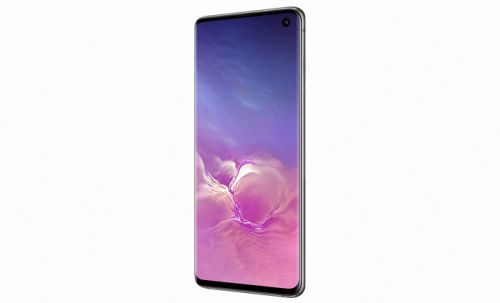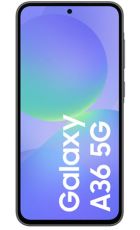The Samsung Galaxy S10 was a hugely anticipated phone, and unlike the Samsung Galaxy S9 – which was a fairly modest upgrade on the Galaxy S8 – this made a strong first impression, with a new design and high-tech features.
But does it continue to impress over time, or does it disappoint? After all, while there’s no doubt that this is a good phone, it’s also an expensive one, so is there really enough here to justify the price?
The short answer is yes – with a few minor caveats – but for the long answer read on for a detailed look at Samsung’s latest flagship.
Screen
The Samsung Galaxy S10 has a 6.1-inch 1440 x 3040 Dynamic AMOLED screen, so it’s on the large side – the Galaxy S9 was just 5.8 inches – and very high resolution, coming in at 550 pixels per inch.
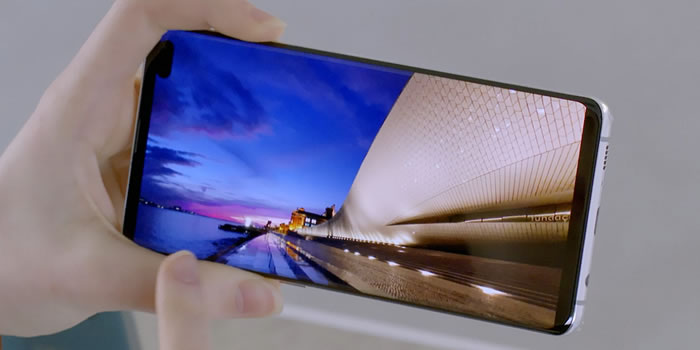
It has a 19:9 aspect ratio in line with other modern flagships, but it goes above and beyond, with not just the curves that Samsung’s flagships are known for, but also the almost complete removal of bezels, with just a small circular cut-out in the top right corner for the camera and a tiny bezel below the screen.
This makes for one of the most all-screen designs we’ve seen on a phone so far and while you might think the camera hole would be distracting, you’re likely to quickly get used to it.
This being AMOLED the screen also displays visuals vibrantly with brilliant contrast, and it’s one of the first handsets with support for HDR10+, which, as the name suggests, is an improved version of HDR10, so supported content will look even better than on other HDR phones.
The screen is bright too, so easy to see in direct sunlight and all-round it’s just one of the very best you’ll find on a phone.
Design
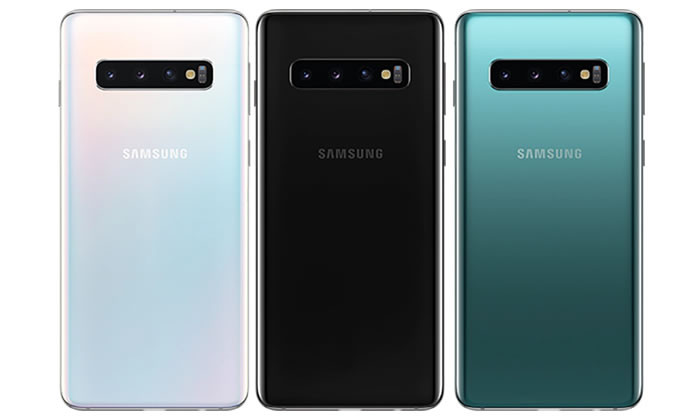
The Samsung Galaxy S10 has a metal frame, a glass back and a curved screen, just like its predecessor, but it looks very different, especially from the front, as there’s almost no bezel around the screen, with the aforementioned camera cut-out instead. It’s a far more modern look, though one that’s sure to be divisive.
The back also looks improved, though in more minor ways. This time around there’s no fingerprint scanner, as that’s built into the screen, so other than the camera it’s just a smooth glass surface.
The phone looks good and those slim bezels mean that despite having a large screen, the Galaxy S10 comes in at a manageable 149.9 x 70.4 x 7.8mm and 157g. It’s also worth noting that the Samsung Galaxy S10 is dust and water resistant – though so are most other modern flagships.
Power
You get an octa-core Exynos 9820 chipset clocked at up to 2.73Ghz in the Samsung Galaxy S10. This is Samsung’s most powerful smartphone chipset yet and a rival for the likes of the Snapdragon 855, which is powering many other recent Android flagships.
The phone also has 8GB of RAM, which should be more than enough for any task. While a few phones are now reaching 12GB, most still work just fine with 4GB, including the Samsung Galaxy S9.
The S10 is smart too, as it can do things like learn how you use it, to ensure frequently used apps are preloaded into its memory, so they launch even faster.
In short then, the Samsung Galaxy S10 is every bit as powerful as you would expect and hope and is sure to remain a speedy phone until your next upgrade.
Camera
The Samsung Galaxy S10’s camera is another excellent aspect of the phone, for a number of reasons. Firstly, you get a lot of lenses, with three on the back. There’s a 12MP f/2.4 telephoto one, a 16MP f/2.2 ultra-wide one and a 12MP one with a variable aperture that can switch between f/1.5 and f/2.4.
That makes for a very versatile setup, helped by optical image stabilisation (OIS) on two of the lenses, which ensures your shots stay steady and in focus.
The camera also allows for 2x optical zoom, so with all of this you can get a wide view, a normal view, a zoomed in view and opt for an aperture that allows in more light, for strong low light shooting, with that last point aided by the phone’s Dual Pixel sensor.

And it’s not just photos that excel, as the Galaxy S10 can also record video in up to 4K quality, and in 960fps slow motion.
You can also adjust the depth of field for striking portrait shots, machine learning through the phone’s neural processing unit allows the camera to provide shot suggestions and optimise settings, and the 10MP f/1.9 front-facing camera is capable too.
Features
One of the big new features of the Samsung Galaxy S10 is an in-screen fingerprint scanner. We’ve mentioned this briefly above, but it’s worth emphasising what a difference it makes. It means the fingerprint scanner no longer takes up visible space on the phone, and unlocking it by placing your finger on the screen is a really slick experience.
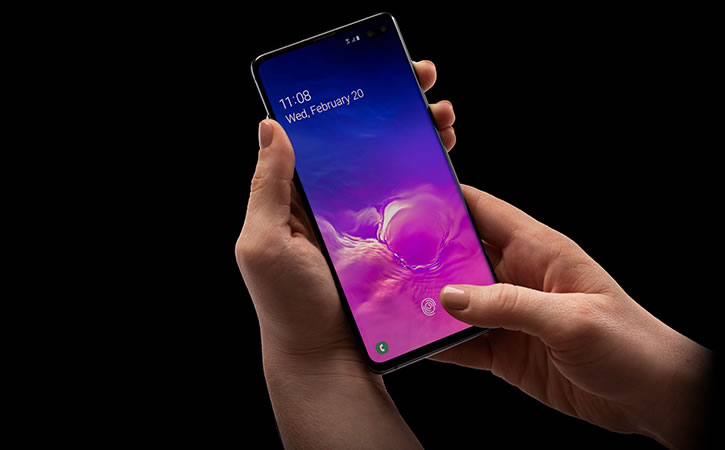
The Galaxy S10 also has stereo speakers with Dolby Atmos, ensuring audio is louder and clearer than from most phones. But unlike many flagships there’s also still a 3.5mm headphone port here.
Battery life, memory and connectivity
The Samsung Galaxy S10 has a 3,400mAh battery, which is a fairly average size and one of our only issues with the phone. That’s bigger than the S9’s, but still on the small side for a phone with a 6.1-inch screen and it shows in performance, with this thing unlikely to last more than a day between charges.
It does at least charge fast and optionally wirelessly. It also has a feature that lets you use the phone to wirelessly charge other devices, but given the underwhelming size of the battery you probably won’t want to do this much.
There’s a choice of 128GB or 512GB of storage, and you also get a microSD card slot, so space isn’t an issue. Connectivity options meanwhile include Bluetooth 5.0, Wi-Fi 6 and NFC.
Verdict
The Samsung Galaxy S10 is close to being a flawless phone. It has a stunning design, the best screen around, loads of power, a great, versatile camera, lots of storage and loads of features. It’s only really the battery that lets it down.
It’s also a bit disappointing compared to the Galaxy S10 Plus – which fixes the battery issues and has an extra front camera, as well as a larger screen. But you’ll pay more for the privilege.
Still, the Samsung Galaxy S10 is clearly one of the best phones you can buy, especially if you don’t want to spend silly money. It costs a lot, but not as much as its larger sibling or the iPhone XS.


